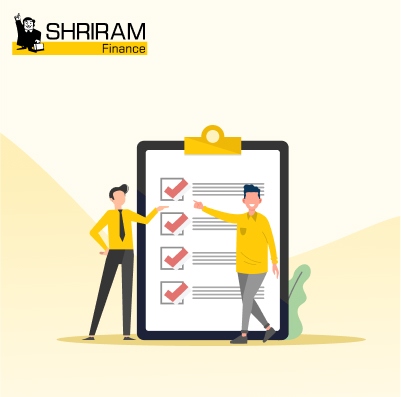Heavy machinery and equipment are crucial investments for small construction businesses and contractors. However, the substantial price tags often put ownership out of reach. This is where financing construction equipment through business loans can enable contractors to acquire essential assets while managing costs.
Several lending institutions now offer loan options tailored to the needs of small construction firms and independent contractors. Let’s explore the types of construction equipment loans available and how entrepreneurs can pick the best fit for their finances and operations.
Types of Financing for Small Construction Businesses
Mentioned below are the main types of construction equipment loans:
Term Loans
Construction equipment loan for small business allow borrowing a fixed amount to buy equipment with ownership rights. The principal and interest are generally repaid in Equated Monthly Instalments (EMIs) over a tenure of typically 36-60 months.
While term loans require sizeable down payments, they bring full asset ownership and potential tax deductions on interest and depreciation expenses.
Leasing Equipment
Leasing transfers asset usage rights to the contractor for an agreed tenure of typically 12-48 months, not ownership. The equipment financing company purchases the machinery, and the contractor pays for the rental.
Leasing helps small businesses access equipment without paying a large upfront cost. However, since you don’t own the equipment, there may be usage limits, and you won’t benefit from its resale value. Leasing is a good option for short-term needs but may cost more in the long run.
Renting Machines
Renting provides contractors with access to equipment on an hourly, daily, weekly, or monthly basis. It allows them to use machinery precisely when needed without requiring capital expenditure.
Also, the rentals become costlier for long-term routine usage. They also require constant coordination with rental companies for delivery and returns.
Hire Purchase
Hire purchase or instalment payment system aims to enable ownership by allowing users to pay for assets in phases. The equipment becomes the property of the buyer after all instalments get paid.
This route is closer to buying than renting equipment through EMIs. However, it also means limited flexibility and loss of total user rights until the last payment gets made.
Eligibility for Construction Equipment Loan for Small Business
When applying for a construction equipment loan for a small business, financial institutions have specific eligibility requirements that applicants are expected to meet. These criteria ensure that the applicant can repay the loan and that the equipment purchase aligns with the business’s needs and financial situation.
Basic Qualification Parameters
Lending institutions mainly assess two aspects before approving financing for contractors – business health and owner’s financial soundness. While these may vary slightly by loan provider, the typical requirements include:
- Time in business – Usually 2+ years
- Revenue stability indicated through annual contracts or construction orders from clients
- Consistent timely payments to subcontractors and suppliers
- No record of delays or defaults in business or personal credit obligations
Documents Required
The paperwork needed to demonstrate eligibility and process loan applications includes:
- Business registration and incorporation papers
- Financial statements for the last 2-3 years
- Owner’s documents – identification proof, residence proof, financial statements, etc.
- Equipment details including maintenance logs (for used equipment purchases)
- Purchase orders/agreements specifying equipment requirements for ongoing and upcoming projects
- Client contracts, construction agreements, and deal sheets indicating continual business
Evaluating the Best Construction Equipment Loan for Small Business
Choosing the right construction equipment loan for small businesses requires careful consideration of various factors to ensure it aligns with the business’s financial situation and operational needs.
1. Compare Effective Costs
A cost comparison model analysing parameters like interest outgo, repairs and maintenance costs, and equipment downtime losses alongside tax savings allows for the identification of an objectively cheaper financing method.
2. Map Usage Requirements
The ideal financing solution depends greatly on intended usage cycles. Frequently used equipment merits owning rather than renting. Infrequent users may find leasing or rental more pocket-friendly, even for long time periods.
3. Assess Working Capital Stability
Healthy cash flows and reserves allow larger investments in equipment ownership, whereas startups and growing businesses may be better off with rentals or small-ticket loans.
4. Match Timelines
The right financing option should align with the company's project duration and equipment usage needs. Renting may work for short-term needs, leasing can be suitable for projects under two years, and purchasing might be ideal for equipment with a longer useful life, typically over five years of useful life.
5. Consider Taxation Impact
Purchased equipment allows claiming accelerated depreciation and deductions on interest outgo toward loans. Leased or rented equipment offers expenses claimed against taxable revenues. Consider the taxation advantages applicable for each option.
Benefits of Choosing Construction Equipment Loan for Small Business
Taking out construction equipment financing for startups to purchase construction equipment offers several advantages:
- Asset Ownership: Once the loan is repaid, the business owns the equipment outright, which can add to the company's assets.
- Improved Cash Flow: Loans spread the cost of equipment over time, reducing the immediate financial burden.
- Tax Benefits: The equipment can be depreciated, providing tax relief for the business.
- Operational Flexibility: Owning equipment gives the business complete control over its usage and maintenance.
Conclusion
For small and growing contractors aiming for scalability, getting the latest productive construction equipment is indispensable—but often implausible without financing. The good news is that financial institutions and Non-banking Financial ompanies (NBFCs) now provide multiple loan and lease options tailored to smart entrepreneurs based on business viability rather than collateral ownership.
With the right loan or lease supporting equipment investments, small contractors can multiply productivity, take on more complex projects, and fast-track their success trajectories.
































